Variegated thread, a unique and versatile element in the sewing and crafting world, is a thread like no other. Its captivating and dynamic multi-color composition sets it apart, with a range of colors dyed onto a single strand.
These colors transition smoothly or in striking patterns, adding depth and dimension to creative projects. Variegated thread is available in various materials and weights, making it a favorite tool among quilters, embroiderers, and crafters.
Its visual appeal and ability to mimic natural shading and textures bring an artistic touch to quilting and embroidery.
This article explore the fascinating world of variegated thread, its types, and how it can elevate your crafting endeavors.
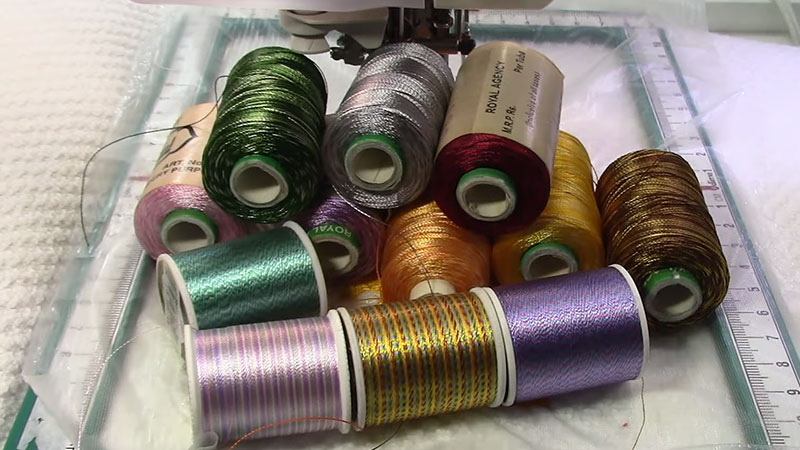
What Is Variegated Thread?
Variegated thread is a specialized sewing and crafting thread with multiple colors dyed onto a single strand. It creates striking visual effects with color variations along its length, transitioning gradually or in contrasting patterns.
Available in various materials and weights, it adds depth, dimension, and creativity to projects like quilting, embroidery, and decorative stitching.
Variegated thread comes in two primary types: tone-on-tone, featuring subtle shade transitions within a color family, and contrast, with sharp color shifts for vibrant designs.
It’s favored for enhancing aesthetics, saving time, and bringing artistic and realistic elements to various creative endeavors.
Types of Variegated Thread
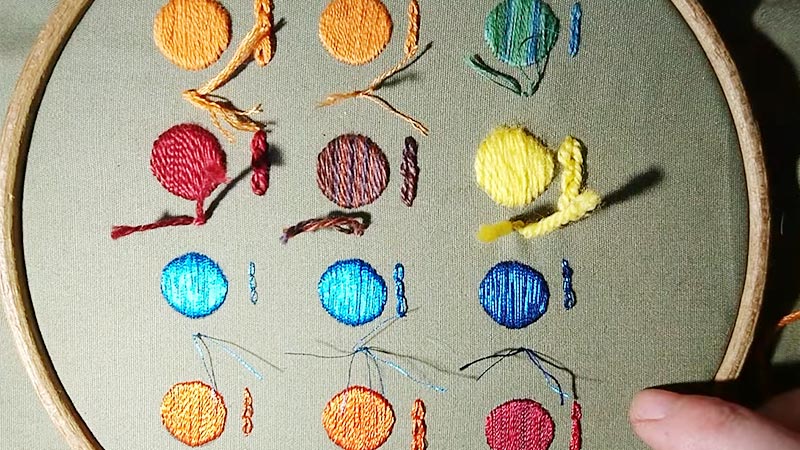
Variegated thread, known for its eye-catching multi-color appearance, comes in different types, each offering a distinct visual effect and creative potential.
Here are the two primary types of variegated thread:
Tone-on-Tone Variegated Thread
This type of variegated thread features a color palette comprising different shades of the same color or color family. The transitions between shades are often subtle, creating a gentle and harmonious gradient effect.
Tone-on-tone variegated thread is an excellent choice to add depth and dimension to your projects without introducing solid contrasts. It’s often used in projects where a more subdued color variation is desired.
Contrast Variegated Thread
Contrast variegated thread is characterized by using contrasting and distinct colors along the thread’s length. The transitions between colors are sharp and striking, resulting in a vibrant and dynamic effect.
This variegated thread is ideal for adding color and excitement to your crafts. It’s frequently chosen when you want to create bold and visually captivating designs that stand out.
How Can Variegated Thread Elevate My Craft Projects?
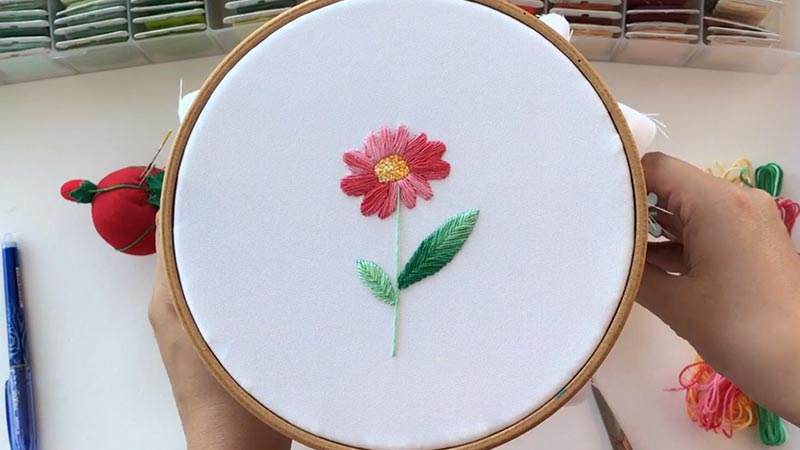
Variegated thread is a creative powerhouse in the world of crafting, capable of elevating your projects in several remarkable ways:
Visual Impact
Variegated thread’s multi-colored appearance instantly adds visual intrigue to your craft projects. The color variations along its length create eye-catching effects that draw the viewer’s attention, making your work more captivating and engaging.
Depth and Realism
Variegated thread is a masterful tool for adding depth and a sense of realism to your creations. Whether you’re sewing, quilting, or embroidering, the gradual color transitions or bold contrasts can mimic shading and textures, making your projects appear three-dimensional and more lifelike.
Efficiency and Cost Savings
Using variegated thread simplifies your work by eliminating the need to change thread colors constantly. This saves time and reduces the cost of purchasing and managing multiple thread spools, making it a practical choice for budget-conscious crafters.
Versatility
Variegated thread is incredibly versatile. It offers many creative possibilities, from creating gradients and blends to producing stark contrasts and intricate patterns. This versatility allows you to experiment and explore different design effects.
Enhanced Aesthetics
Whether you’re working on simple or complex projects, the variegated thread can transform plain designs into visually appealing masterpieces. It adds sophistication and uniqueness to your creations, making them stand out and leave a lasting impression.
Ideal for Quilting and Embroidery
For quilters and embroiderers, variegated thread is a game-changer. It enhances the visual appeal of quilted patterns and brings detailed embroidery designs to life, making them more visually striking and exciting.
Mimicking Nature
Variegated thread is often used to mimic the colors and textures of natural elements, such as flowers, water, skies, or landscapes. This adds a touch of realism to nature-inspired designs, making them look more authentic and captivating.
Detail Accentuation
When specific details within a design need emphasis, variegated thread is a valuable tool. It can outline or accentuate particular features, making them stand out and catch the viewer’s eye.
Diverse Effects
Variegated thread offers a wide range of design effects. Whether you want to create realistic shading, bold and vivid contrasts, or intricate patterns, you can choose the variegation style that best suits your project’s theme and creative vision.
Customization Made Easy
Selecting the right variegated thread allows for easy customization. You can achieve your desired color transitions without the complexity of frequent thread changes and blending, simplifying the creative process and enabling you to bring your artistic vision to life more efficiently.
What Types of Projects Benefit From Using Variegated Threads?
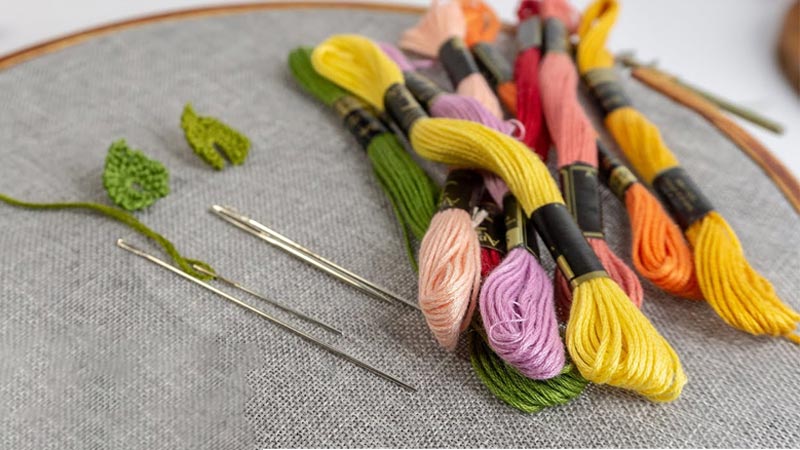
Various projects can benefit from using variegated thread due to its unique multi-color appearance and creative potential.
Here are some projects that can be enhanced by using variegated thread:
Quilting
Variegated thread is a popular choice among quilters. It can be used for piecing and quilting, adding depth and visual interest to quilted pieces.
Whether you’re working on traditional or contemporary quilts, the variegated thread can create intricate patterns and make your quilts stand out.
Embroidery
In embroidery, variegated thread is a valuable tool for achieving realistic shading and color transitions. It allows embroiderers to mimic natural elements, adding depth and complexity to their designs.
It’s beneficial for creating lifelike landscapes and intricate portraits.
Decorative Stitching
Crafters often use a variegated thread for decorative stitching on various projects. Whether sewing edging on a cushion cover, creating striking patterns on a tote bag, or adding flair to garments, the variegated thread can make your projects visually appealing and unique.
Creative and Artistic Projects
Variegated thread is a favorite among artists and creators. Its multi-color effect adds vibrancy and complexity to abstract and artistic works. It can help convey emotions and create striking visual statements in mixed media and textile art.
Seasonal and Festive Crafts
For holiday decorations and seasonal projects, variegated thread is an essential addition. Its ability to transition seamlessly between colors is perfect for creating vibrant and thematic designs that capture the season’s spirit.
From festive ornaments to seasonal decor, variegated thread adds a touch of magic to your crafts.
Textile Art and Mixed Media
Variegated thread is a valuable resource in textile art and mixed media projects. It can mimic natural elements like water, sky, foliage, and more, adding texture and visual interest to fabric sculptures and mixed media pieces.
Adding Interest to Solids
Solid-colored fabrics can sometimes benefit from the addition of variegated thread. It introduces captivating color variations and complexity, turning plain projects into visually stunning works of art.
Abstract and Contemporary Art
Artists and creative individuals use variegated threads to create abstract and contemporary art pieces. Its multi-color effect can add depth and a dynamic visual element to these creations.
Benefits of Using Variegated Thread in Quilting and Embroidery
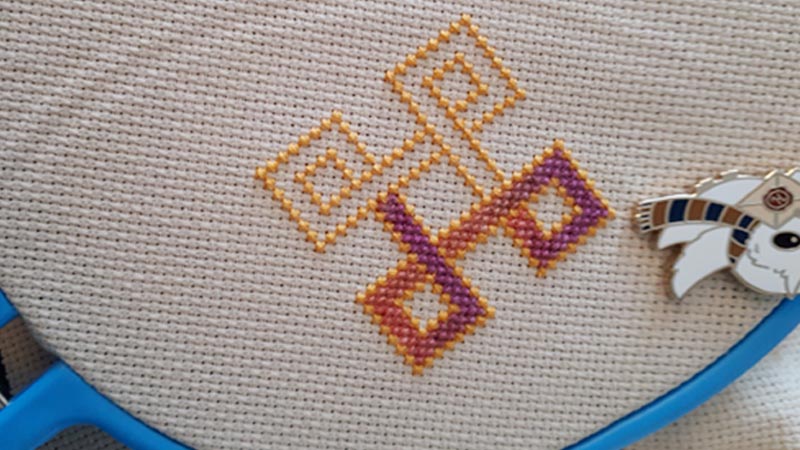
Using variegated thread in quilting and embroidery offers a multitude of benefits, enhancing the visual appeal and creative potential of these textile arts:
Aesthetic Intrigue
Variegated thread introduces captivating multi-color effects to your quilting and embroidery. The color transitions along the thread’s length create an element of visual intrigue, making your work more fascinating and unique.
Realistic Shading
Variegated thread is a powerful tool for achieving realistic shading in your designs. Whether you’re working on an embroidered portrait or a quilted landscape, the gradual color transitions can mimic natural shading and gradients, adding depth and realism.
Dimension and Depth
The variations in variegated thread can add depth and dimension to your quilting and embroidery projects. This can make elements in your designs stand out, creating a more three-dimensional and textured effect.
Efficiency and Time Savings
Using variegated thread simplifies the process of selecting and changing thread colors. You don’t need to switch between multiple spools of thread as frequently, which saves time and reduces the effort required during your quilting and embroidery work.
Artistic Freedom
Variegated thread provides you with artistic freedom and creative flexibility. You can experiment with various color combinations, transitions, and patterns, allowing you to create unique and imaginative designs that reflect your style.
Efficiency in Color Transitions
Achieving intricate color transitions and shading effects becomes more efficient with variegated thread. You can effortlessly create nuanced color changes without requiring precise thread color adjustments, resulting in a smoother creative process.
Simplified Color Selection
When using variegated thread, you don’t need to spend as much time selecting the perfect thread colors for different sections of your project. The thread’s built-in color transitions offer natural and harmonious color coordination.
Enhanced Visual Appeal
Variegated thread adds an extra layer of sophistication and visual appeal to your quilting patterns and embroidered images. It can make your work more visually striking and memorable, setting it apart from projects that use single-color threads.
Versatile Design Options
The variegated thread allows for a wide range of design possibilities. You can choose the type of variegation that best suits your project, whether you want subtle tone-on-tone transitions for a gentle gradient effect or bold contrasts for a dramatic visual impact.
Thematic and Seasonal Flexibility
Variegated thread can be used to create thematic or seasonal designs. Whether you’re working on holiday-themed embroidery or a quilt inspired by a particular season, the thread’s color variations can help capture the essence of the theme and the time of year.
FAQs
Can Variegated Thread Be Used in Machine Embroidery?
Yes, variegated thread is suitable for machine embroidery. It can add dimension and interest to embroidered designs, making them more visually appealing.
How Do I Choose the Right Variegated Thread for a Specific Project?
Select a variegated thread that complements your project’s theme and color scheme. Consider the type of variegation (tone-on-tone or contrast) that best suits your design, and think about the material, such as cotton, silk, or metallic.
Can Variegated Thread Enhance Abstract and Contemporary Art Projects?
Yes, artists use variegated thread to create abstract and contemporary art, as its multi-color effect adds depth and dynamic visual elements to these creations.
What Are Some Popular Color Combinations for Variegated Thread?
Popular color combinations include earthy tones for nature-inspired projects, cool blues and greens for water-themed designs, and warm shades for seasonal or autumnal crafts.
Is Variegated Thread Suitable for Beginners in Sewing and Crafting?
Beginners can use variegated threads, but starting with more straightforward projects is essential to get a feel for how the thread behaves. As you gain experience, you can tackle more complex designs.
To Recap
Variegated thread is a remarkable addition to the arsenal of any crafting enthusiast. Its ability to transform ordinary projects into visually captivating masterpieces cannot be overstated.
Whether in quilting, embroidery, or other creative endeavors, variegated thread provides a gateway to artistic expression and depth.
Its diverse range, from tone-on-tone subtlety to contrast vibrancy, offers endless possibilities for design. The convenience it brings in time and effort savings makes it a valuable asset to crafters.
With variegated thread, the crafting world becomes more colorful, dimensional, and artistically engaging, offering a unique and dynamic element that elevates the quality of your work.
Leave a Reply